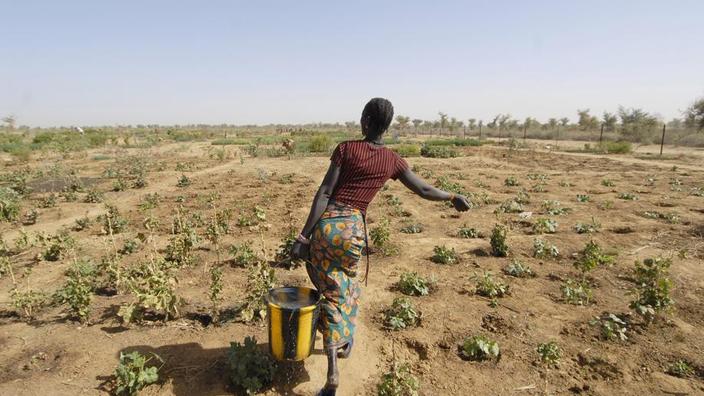African researchers alerted Thursday in Abidjan to the proliferation of agricultural plant diseases that seriously threaten the food security of half a billion people on the continent, reported an AFP journalist.
Read also: Africa: alert on a risk of a food crisis
Coming from ten West and Central African countries, as part of the West African Virus Epidemiology (WAVE) program, researchers have revealed the appearance in Côte d'Ivoire of the "
sugar cane virus
", a new pathology "
which only existed on the Asian continent and not elsewhere
" and "
banana disease
" in Africa. "
Migratory insects, plant diseases and other pests pose a serious threat to the crops and incomes of farmers in West and Central Africa,
" said Dr Justin Pita, executive director of the WAVE program, focused on food security and funded by the Bill and Melinda Gates Foundation.
3 billion dollars of losses per year in Sub-Saharan Africa
Justin Pita, along with the Ivorian ministers of Agriculture from Côte d'Ivoire (Kobena Kouassi Adjoumani) and Gabon (Biendi Maganga-Moussavou), inaugurated a new regional research center on viral plant diseases.
For him, “
food security is threatened, biodiversity and the regional environment are damaged under the combined and harmful action of locusts, fall armyworms, fruit flies, and diseases of banana and cassava (.. .) are spreading throughout West and Central Africa, causing heavy losses for farmers
”.
Read also: East Africa: locust infestations threaten food security
The researchers were genuinely "
worried
" about the disclosure of "
mosaic
" and "
brown streak
", two diseases of cassava, the food base of 500 million Africans which cause "
a loss of three billion dollars per year in Sub-Saharan Africa
”. “
In Uganda, a cassava epidemic in the 1990s killed 3,000 people due to famine. It's like no attiéké in Ivory Coast or no gari in Nigeria,
”explained Dr. Pita. Attiéké, made from cooked cassava semolina, is very popular with people living in Côte d'Ivoire but also abroad. Gari is a semolina derived from cassava.
Africa is the world's largest producer of cassava (57%), which consumes the tubers, rich in carbohydrates and starch, but also the leaves and starch (which looks more like a semolina), produced from the roots. Cassava has established itself as a strategic crop for food security and poverty reduction on the continent. This plant is a subsistence and cash crop for African producers. The WAVE program, headquartered in Bingerville, near Abidjan, advocates “
a regional approach
” to combat viral diseases.

